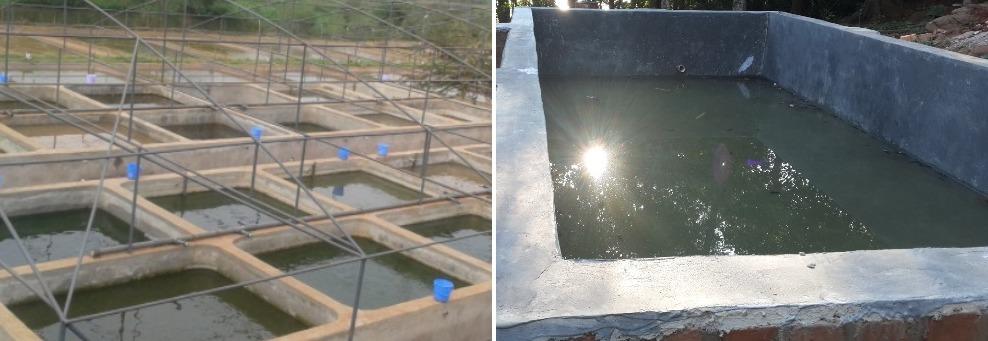- This topic is empty.
- AuthorPosts
- Aprili 15, 2025 at 6:22 mu #625897

Constructing durable and efficient concrete fish ponds requires meticulous planning and adherence to best practices. A well-designed and constructed pond not only ensures the longevity of the structure but also optimizes the fish farming environment, leading to healthier fish and increased productivity.
This article explores key design and construction best practices for durable and efficient concrete fish ponds.
1. Site Selection And Preparation
The success of a concrete fish pond begins with careful site selection. Factors such as soil type, topography, water source availability, and proximity to infrastructure are crucial considerations. A stable soil with good drainage is essential to prevent structural issues.
Proper site preparation involves clearing vegetation, leveling the ground, and compacting the soil to provide a firm foundation for the concrete structure.
Thorough soil testing can help determine the load-bearing capacity and identify any potential issues that need to be addressed before construction commences.
2. Pond Design And Layout
A well-thought-out pond design is fundamental for efficient water management, fish health, and ease of maintenance. Considerations include the desired size and shape of the pond, water inlet and outlet locations, drainage systems, and any additional features like sumps or aeration provisions. The depth of the pond should be appropriate for the fish species being raised and the local climate.
Designing for proper water circulation is vital to prevent stagnant areas and maintain adequate oxygen levels. The layout should also consider accessibility for feeding, harvesting, and cleaning.
3. Concrete Mix Design And Material Selection
The durability of a concrete fish pond heavily relies on the quality of the concrete mix and the materials used. Selecting the appropriate cement type, aggregate size and quality, and admixtures is crucial for achieving the desired strength, workability, and water tightness.
A well-designed mix will minimize permeability, preventing water seepage and potential damage to the concrete structure over time. Proper proportioning of the concrete ingredients and thorough mixing are essential to ensure a homogeneous and strong concrete. Using corrosion-resistant reinforcement steel is also vital to prevent rusting and structural weakening in the moist pond environment.
4. Construction Techniques And Quality Control
Employing sound construction techniques is paramount for building a durable concrete fish pond. This includes proper formwork construction, accurate placement of reinforcement steel, and careful pouring and compaction of the concrete. Ensuring adequate concrete cover over the reinforcement is essential for corrosion protection.
Curing the concrete properly after pouring is critical for achieving its full strength and durability. Implementing rigorous quality control measures throughout the construction process, including regular inspections and testing, helps identify and rectify any potential issues early on, ensuring the long-term integrity of the pond structure.
5. Waterproofing And Sealing
Preventing water leakage is crucial for the efficiency and longevity of a concrete fish pond. Implementing effective waterproofing and sealing measures is therefore essential. This can involve using specialized concrete admixtures that reduce permeability, applying waterproof membranes or coatings to the inner surfaces of the pond, and carefully sealing joints and penetrations.
Thorough surface preparation before applying any waterproofing materials is critical for proper adhesion and effectiveness. Regular inspection and maintenance of the waterproofing system are necessary to prevent leaks and maintain water levels.
In conclusion, adhering to these design and construction best practices for durable and efficient concrete fish ponds is vital for successful aquaculture. By focusing on careful site selection, thoughtful pond design, appropriate material selection, sound construction techniques, and effective waterproofing, fish farmers can create long-lasting and productive environments for their aquatic ventures.
Read Also: Optimizing Water Quality Management in Catfish Aquaculture for Sustainable Production
- AuthorPosts
- You must be logged in to reply to this topic.

